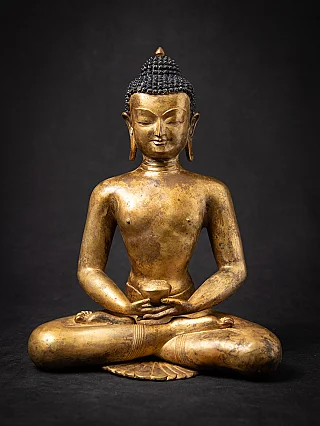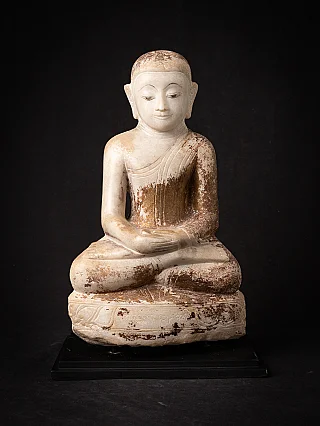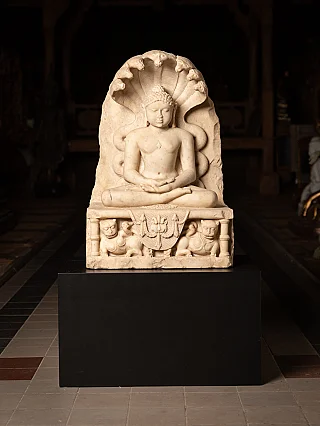Dhyana Mudra

The Dhyana Mudra, often called the gesture of meditation, is a powerful symbol within Buddhism. It represents the deep concentration and introspection that lead to enlightenment. Rooted in ancient traditions, this mudra has been a fundamental aspect of Buddhist iconography, meditation practices, and spiritual teachings.
What is Dhyana Mudra Gesture?

The Dhyana Mudra is characterized by the positioning of both hands on the lap, with the right hand resting atop the left and palms facing upwards. The fingers are fully extended, with the four fingers of each hand resting on one another, while the thumbs touch each other, pointing upwards. Together, the hands and fingers form a triangular shape, a symbolic representation of the spiritual fire or Triratna (Three Jewels) of Buddhism—Buddha, Dharma, and Sangha.
This hand gesture is most commonly associated with the Sakyamuni Buddha, the historical Buddha who attained enlightenment under the Bodhi tree, and Amitabha Buddha, the Buddha of Infinite Light. In some depictions, the Dhyana Mudra is also used to represent Bhaisajyaguru, the Medicine Buddha, accompanied by a medicine bowl resting on the palms.
Historical Origins and Cultural Significance

The Dhyana Mudra originates in ancient India and likely emerged during the Gandhara period when Greco-Buddhist art flourished in the region. The influence of this mudra extended to China during the Wei period, where it became integral to Buddhist practices.
While the Dhyana Mudra is closely associated with Buddhism, it predates the religion. Ancient yogis utilized this gesture in their concentration, healing, and meditation practices. The mudra's deep connection to meditation makes it a universal symbol of inner peace and focus, transcending religious boundaries.
The Dhyana Mudra is particularly revered in Theravada Buddhism and is predominantly practiced in Southeast Asia. However, a variation exists where the thumbs are pressed against the palms, reflecting regional adaptations of the gesture.
Symbolism and Usage
The triangular formation created by the hands in the Dhyana Mudra is deeply symbolic. It represents the Triratna—the Buddha, who embodies enlightenment; the Dharma, the teachings that lead to enlightenment; and the Sangha, the community of practitioners who follow the path to enlightenment. This triangle symbolizes the fire of concentration that burns away distractions and impurities, allowing the practitioner to achieve deep meditation and spiritual insight.
The Dhyana Mudra is also known as Samadhi Mudra or Yoga Mudra, highlighting its connection to the state of Samadhi. This profound meditative absorption leads to the realization of the ultimate truth.
In Japanese, it is referred to as Jo-in or Jokai Jo-in, while in Chinese, it is known as Ding Yin.
The Dhyana Mudra in Art and Meditation

Throughout history, the Dhyana Mudra has been a central motif in Buddhist art. Statues and paintings often depict the Buddha in this mudra, symbolizing his deep meditation and serene focus. These representations serve as a visual guide and inspiration for practitioners, reminding them of the importance of meditation on the path to enlightenment.
The Dhyana Mudra continues to be widely used in modern meditation practices. Whether in formal meditation sessions or personal spiritual practices, this mudra helps practitioners cultivate a state of calmness, concentration, and inner peace. The simple yet profound gesture encourages the mind to settle, facilitating a deeper connection with the self and the present moment.
Conclusion
The Dhyana Mudra is more than just a physical gesture; it is a profound symbol of the meditative journey at the heart of Buddhist practice. Its historical roots, deep symbolism, and enduring presence in art and meditation make it a cornerstone of spiritual exploration. As practitioners assume this mudra, they connect with a tradition that has guided countless individuals on their path to enlightenment, embodying the essence of meditation and concentration in pursuing spiritual growth.
Share this page














































